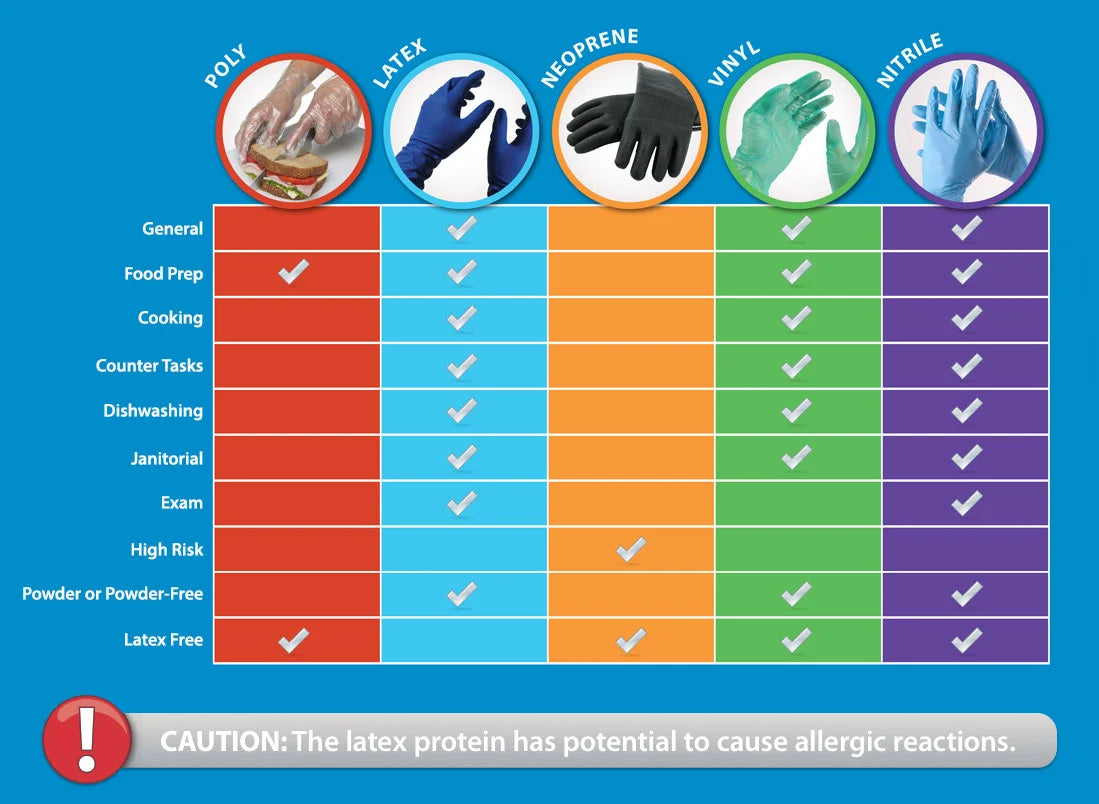In the realm of healthcare and medical settings, disposable medical gloves are indispensable tools for safeguarding the well-being of both patients and healthcare professionals alike. These versatile gloves serve as a vital barrier against contamination, infections, and cross-contamination, reducing the risk of spreading harmful pathogens. Understanding the different types of disposable medical gloves and their specific uses is crucial for ensuring optimal protection and hygiene standards.
-
Latex Gloves: Latex gloves have long been the standard in medical settings due to their exceptional elasticity, comfort, and dexterity. They provide a snug fit and tactile sensitivity, making them ideal for intricate procedures, such as surgeries and intricate examinations. However, it's essential to note that some individuals may have latex allergies, necessitating the use of alternative glove materials.
-
Nitrile Gloves: Nitrile gloves have emerged as a popular latex-free alternative, suitable for those with latex sensitivities. Known for their exceptional puncture resistance and durability, nitrile gloves are well-suited for handling potentially hazardous substances, such as chemotherapy drugs, and are a staple in emergency rooms, dental offices, and laboratories.
-
Vinyl Gloves: Vinyl gloves offer a cost-effective option for medical facilities and are frequently used for low-risk tasks. They provide basic protection against fluids and contaminants, making them suitable for general patient care and light cleaning duties. However, they offer less durability and tactile sensitivity compared to latex or nitrile gloves.
-
Neoprene Gloves: Neoprene gloves are unique in their ability to resist a broad range of chemicals, making them the glove of choice for handling hazardous chemicals and chemotherapy drugs. They also offer excellent puncture resistance and are often used in laboratory research and pharmaceutical manufacturing.
-
Polyethylene Gloves: Polyethylene gloves are lightweight and affordably priced, making them suitable for short-duration tasks in food handling and janitorial services. While they lack the robust protection of latex or nitrile gloves, they serve as a convenient option for minimal-risk applications.
Selecting the appropriate type of disposable medical glove depends on the specific task at hand and the level of protection required. Healthcare facilities must consider the potential risks involved and provide their staff with the proper glove options to ensure a safe and sterile environment.
To maintain the highest standards of safety and hygiene, it is essential for healthcare professionals to adhere to proper glove usage protocols, including frequent glove changes, proper disposal, and hand hygiene practices. By embracing these practices and utilizing the right disposable medical gloves for each task, healthcare providers can create a secure environment that promotes the well-being of patients and healthcare workers alike.

